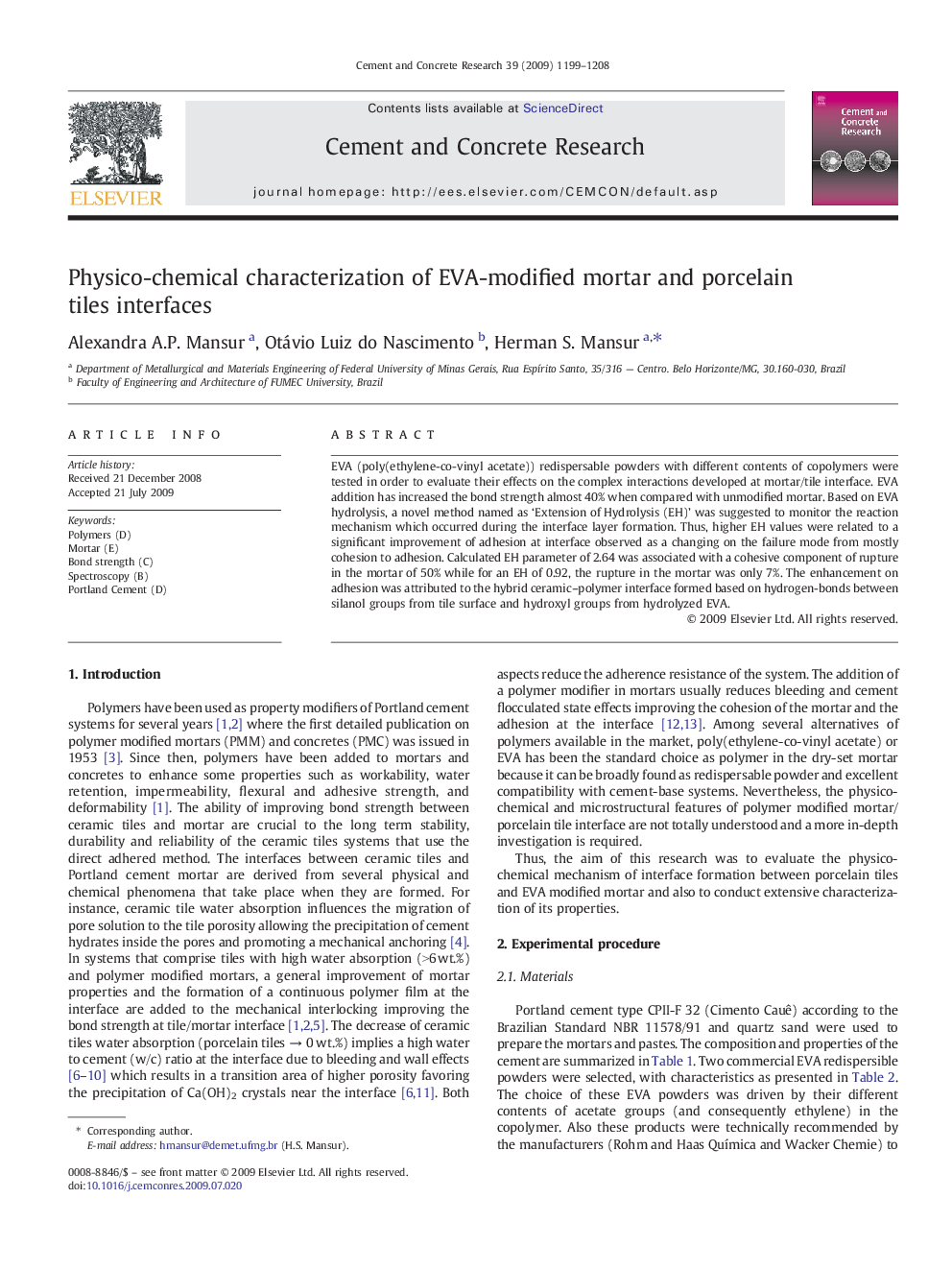| Article ID | Journal | Published Year | Pages | File Type |
|---|---|---|---|---|
| 1457245 | Cement and Concrete Research | 2009 | 10 Pages |
EVA (poly(ethylene-co-vinyl acetate)) redispersable powders with different contents of copolymers were tested in order to evaluate their effects on the complex interactions developed at mortar/tile interface. EVA addition has increased the bond strength almost 40% when compared with unmodified mortar. Based on EVA hydrolysis, a novel method named as ‘Extension of Hydrolysis (EH)’ was suggested to monitor the reaction mechanism which occurred during the interface layer formation. Thus, higher EH values were related to a significant improvement of adhesion at interface observed as a changing on the failure mode from mostly cohesion to adhesion. Calculated EH parameter of 2.64 was associated with a cohesive component of rupture in the mortar of 50% while for an EH of 0.92, the rupture in the mortar was only 7%. The enhancement on adhesion was attributed to the hybrid ceramic–polymer interface formed based on hydrogen-bonds between silanol groups from tile surface and hydroxyl groups from hydrolyzed EVA.
